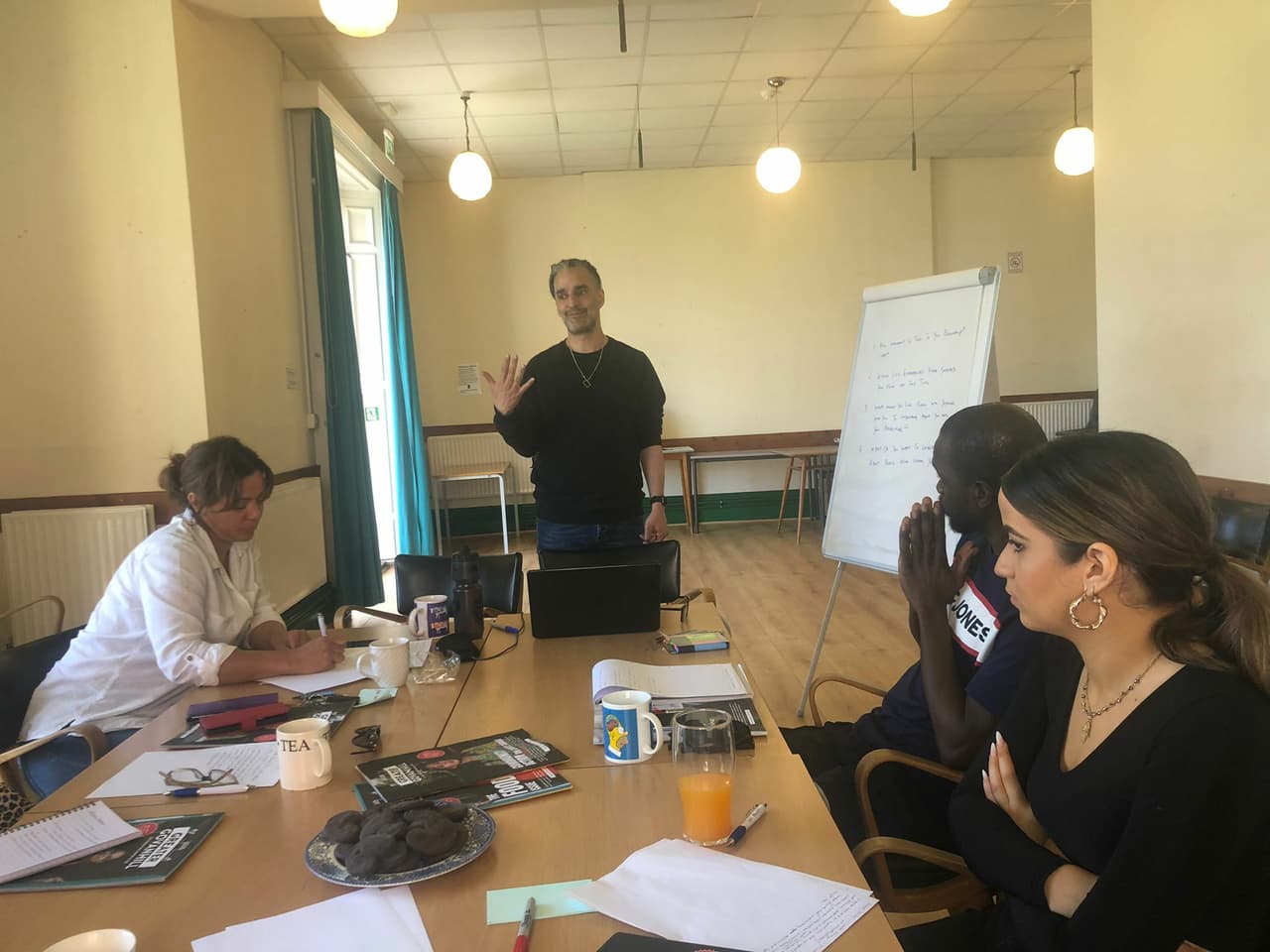
Shifting power to support communities to tell their own stories
Learnings from our pilot to support emerging journalism leaders across Wales
For too many people and communities, journalism has a negative, rather than a positive impact on their lives. This is not just about “historic marginalisation” — many mainstream media organisations continue to other, attack and harm people who don’t fit their increasingly narrow definition of “acceptability”. In that environment, it’s entirely rational for the “victims” of those harms to reject that kind of journalism and what it does. They don’t want or need it. And while this can be difficult to hear, it’s only by being honest about the current role of journalism in most people’s lives that we can understand how and why it might have value.
What people do want is community power that they can build and grow themselves. We believe journalism – that’s reimagined and reclaimed – can be a source of community power and that’s what we sought to explore with our People’s Newsroom pilot in Wales over the course of a year.
The People’s Newsroom is a programme incubated at the Bureau which is exploring the resources needed to build, run and sustain newsrooms that diversify media ownership and authentically represent communities. For years at the Bureau Local we’ve been providing shared editorial and investigative resources that support the reimagining of journalism that is created by, with and for communities. But we knew more needed to be done to support those ill-served and underserved by the media industry to kickstart more diverse, community-led journalism entrepreneurship. So over the past 12 months we’ve run a pilot to support the emergence of new journalism leaders from marginalised backgrounds in order to support a new journalism pipeline. After a successful run, we’re outlining our learnings and impact below.
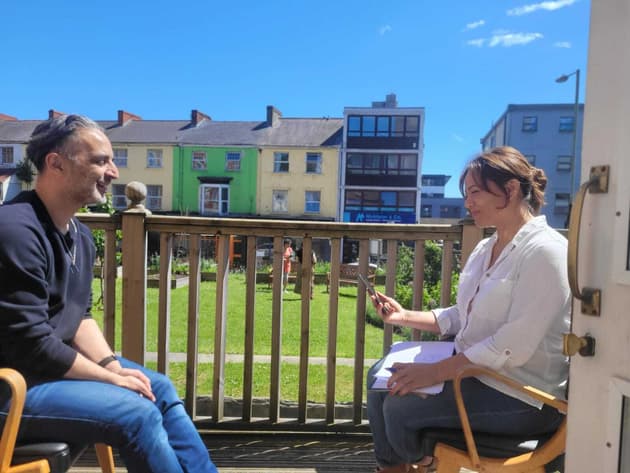 Donna Ali and Shirish Kulkarni wrapping up a session with PNI/EYST
Jessica Perkins
Donna Ali and Shirish Kulkarni wrapping up a session with PNI/EYST
Jessica Perkins
The pilot: “Telling Our Own Stories”, Swansea
We started by partnering with the Ethnic Minorities & Youth Support Team (EYST), working with a group split between Cardiff and Swansea in September last year. EYST is not a newsroom. They are an organisation providing support services and community safety for BME young people, families and individuals including refugees and asylum-seekers living in Wales. This was a new kind of partnership for both of our organisations. We set out to explore what might emerge if a community of people who’ve been harmed by the media and are largely outside the “news industry” was supported to reimagine and reclaim journalism for their benefit. It was fascinating to work with a cohort of ten diverse people, with very different concerns, interests and stories to tell, but with one big thing in common. They’ve all seen the harm journalism has caused to themself or their community.
When we first met, they talked about how they open newspapers with trepidation, scared every day of how their community will be portrayed. They asked why they should trust the media when that’s their experience of it. They told us they didn’t want to run that gauntlet any more, they wanted to tell their own stories.
Our role in this partnership was to explore how we could best share power, knowledge and tools for them to sustain this work themselves. We thought very deeply about how best to equip them with the tools to, as they said, ‘tell their own stories’, and this led to the development of a new kind of training programme. We wanted to provide tools to help them understand the roots of problems, and then to identify potential solutions. Instead of solely focusing on traditional journalism skills, we looked to systems and design thinking and innovative routes to sustainability.
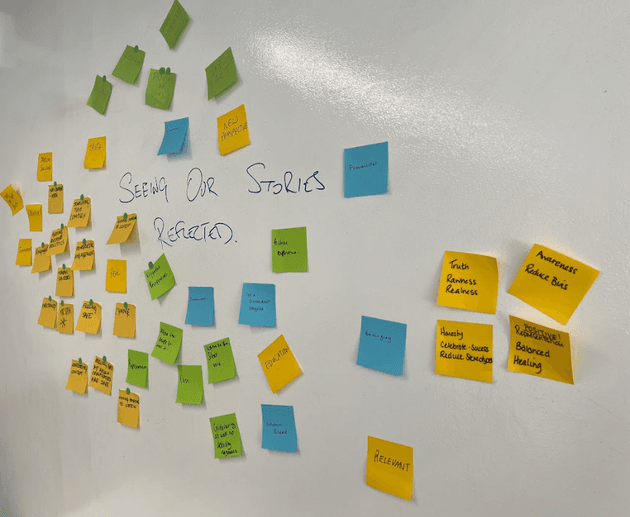 How participants summarised some of their thoughts during training about story framing
Jess Perkins
How participants summarised some of their thoughts during training about story framing
Jess Perkins
In designing the training, we collaborated with a range of partners who shared our values and aims - notably On Our Radar, The Solutions Journalism Network, the PDR design consultancy, Greater Govanhill, Journalism + Design and Black Ballad. Each of our partners brought a wealth of experience and expertise, but also fulfilled a valuable role in demonstrating to participants that there are many people and organisations working to build and support more equitable, inclusive and constructive journalism. It’s clear to us that trust is the existential problem facing journalism and (re)building trust can’t and won’t be done overnight or by individuals or organisations working on their own. It will only be achieved by concerted action across the industry to prioritise trust, by listening deeply and responding thoughtfully. This has been key to People’s Newsroom all along, which is why coalition-building is so central. You can join us here.
Additionally, our aim in partnering with these organisations was to ensure we are giving back to organisations forging and leading this against-the-grain, emergent work. We used the small pot of funding we had for this pilot to commission and pay them to contribute their knowledge so we can distribute, add to momentum and invest in a future together.
Sustainability has also been a central pillar of our work. Telling stories is the easy part, getting someone to pay for them is the really hard bit. With the EYST group, we spent a day with the PDR Design Consultancy, imagining what a journalism product that truly served its community would look like. We’ve also worked with Black Ballad on building an open source sustainability toolkit to support the creation of economically viable journalism built on understanding the needs of users and effectively meeting those needs.
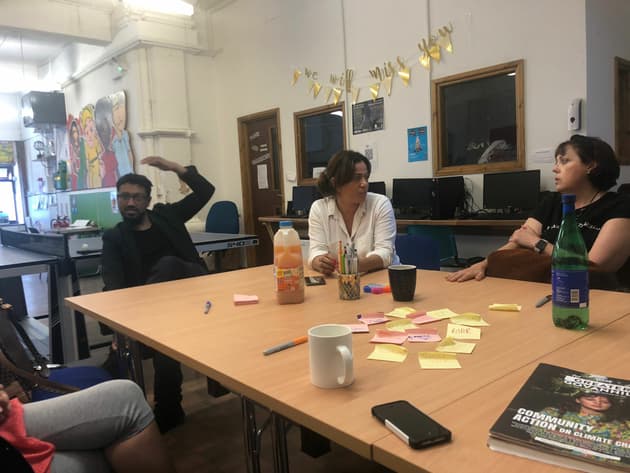 Wrap up session with Helal Udin
Jess Perkins
Wrap up session with Helal Udin
Jess Perkins
What worked
Our key learning from the training was that participants were particularly inspired and engaged by the forward thinking modules. They loved the systems thinking training as it was an opportunity to go beyond the “what” – not just to the “why” and “how” things are happening. They also enjoyed the solutions journalism module as it took them a step further to how things could be fixed. It was in these modules that we saw how the switch flipped — suddenly they started to see how journalism could be a positive force in their lives, giving them agency and power and a route to sparking change for themselves and their communities.
Our aim was to help create a new generation of emerging leaders, people from diverse backgrounds who understand the power they have and how to use it in the service of themselves and their communities. For that reason, when assessing the impact of the program, we didn’t ask participants whether they could now write an article, or film and edit a video. Before and after the training, we asked them how accessible they felt journalism was, how useful they thought it could be for their community and how confident they felt about personally creating positive change for their communities (and to rank out of five). You can see below that on all those measures, the impact of the training was significant – the scores nearly doubled after the training. They now found journalism more accessible and more useful and they were now more confident they personally could be involved in positive change.
It’s this kind of change that we see as deep, long-term and systemic. There are no easy answers or quick fixes for the problems we’ve identified, so it feels important to focus on interventions that can spark genuine and lasting transformation.
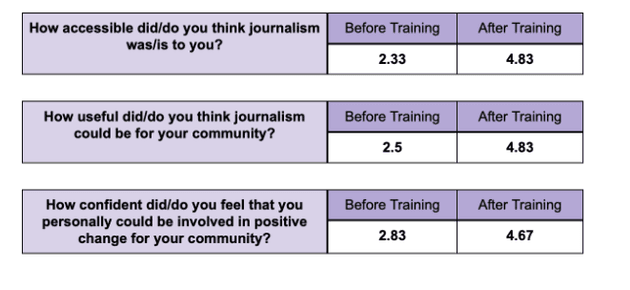 Impact of the PNI training on participants, shown in an average score out of 5
Shirish Kulkarni
Impact of the PNI training on participants, shown in an average score out of 5
Shirish Kulkarni
What we needed to work on
We learnt a lot about how difficult this work is and how it could be done better in the future.
Firstly, it became clear that we needed to create more time and space for reflection, processing and healing around the negative impacts of journalism that’s harmed many of us. We hadn’t expected to factor in time for healing or that our role would need to facilitate it but considering the generational harm of the media, this is something that should be addressed from the start in all reimagining work.
We need space to vent, express pain and call it out. As we are members of the current state of the media, it made sense that we be the ones they can address this with and it felt like an important role those of us in the media can play. Crucially, it then needs to be followed up with a means to heal. We found the systems change sessions that followed were crucial for this and helped turn anger into action. We acknowledge this is quite novel in the news industry and we’re trying to model best practice while also exploring more structured support that can be offered to participants for emotional and physiology safety.
Secondly, this work is difficult, not simply because we’re designing anew, but because all of us are battling within and against the context of what currently exists. While our participants can now imagine – and are supported to produce – new kinds of journalism, the content around them is still the kind they identified as harmful. Before and after the training we asked one additional question: how do you rate your trust in news journalism? While there was some positive movement before and after the training, it was nowhere near as impactful as the other measures. Trust needs to be earned. Our industry needs to do more to get it.
 How participants rated trust in news journalism, before and after training
Shirish Kulkarni
How participants rated trust in news journalism, before and after training
Shirish Kulkarni
Thirdly, we realised that what we were supporting and encouraging was very different from what often happens in the third sector. For example, EYST is used to being funded to carry out tightly defined projects with very specific deliverables – for example a set of articles or films. Our aims were much broader, more open-ended, and arguably more long-term. The impact of emerging leaders. That’s not something that can either be seen or measured in the short term, and so it’s interesting to think about what we actually want the future to be, and what the most effective ways to build that future look like.
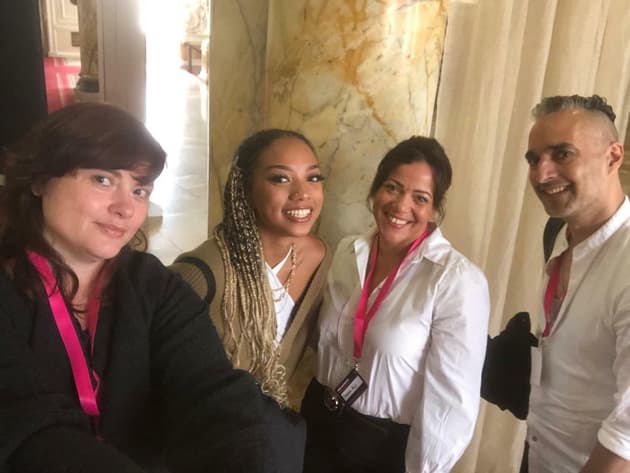 Some of the PNI participants - Jess Perkins, Tai Camilleri, Donna Ali and Shirish Kulkarni (from left to right)
Jess Perkins
Some of the PNI participants - Jess Perkins, Tai Camilleri, Donna Ali and Shirish Kulkarni (from left to right)
Jess Perkins
Expanding the pilot across Wales
That’s exactly what GALWAD, Wales’ project for Unboxed: Creativity in the UK set out to do – telling a story connecting 2052 with 2022, bringing a possible future roaring into the present. In an extension of our pilot, we collaborated with GALWAD’s creative team and the Solutions Journalism Network to work with a further ten people from Blaenau Ffestiniog, Merthyr Tydfil and Swansea to tell stories that spring from their individual experiences but explore systemic problems and potential solutions. They went through an adapted version of the training programme and will be publishing their stories at the start of October with Nation.Cymru as part of the GALWAD’s production that imagines Wales in the future. While the rest of GALWAD content is fictional and takes place in between 2022 and 2052, they are telling real stories now in the hope of bringing that future to life.
Imagining a different future means thinking about storytelling differently. For that reason, we’ve always been agnostic on content – different communities want and need different things – but we’ve already seen the impact of our work together. EYST have committed to continued funding of their “Telling Our Own Stories” project and group members have already written their own articles, made their own films, started a podcast and even got funding to start publishing their own magazine. Shazia Ali, who was integral to our original EYST x People’s Newsroom partnership and the shaping of this programme, is now a BBC Journalism Apprentice, and says she’s “doing it for all the communities that the news has failed”.
Excitingly, several of our participants have told us they now want to be journalists. They’ll be a different kind of journalist. The kind we need.
Access the work
Read the stories from EYST and support them here
Read the stories from GALWAD and follow the production here
What’s next?
This year of experimentation has seen 20 people across Wales participate in training to equip them to be emerging leaders in journalism. We’re so proud of the impact and the connections formed and are moved by each person we’ve met and what we’ve learned along the way. Eight organisations were brought together to make this happen and build a coalition to support each other and forge future work. In this spirit, we are exploring how the coalition can hold this work in the future and expand further pilots. We’re taking a pause as we figure out next steps but you can sign up to The People’s Newsroom newsletter so you’ll be the first to know when we have an update.
Header image: The participants discuss mental health and journalism at the project's final training session, photographed by Jess Perkins
